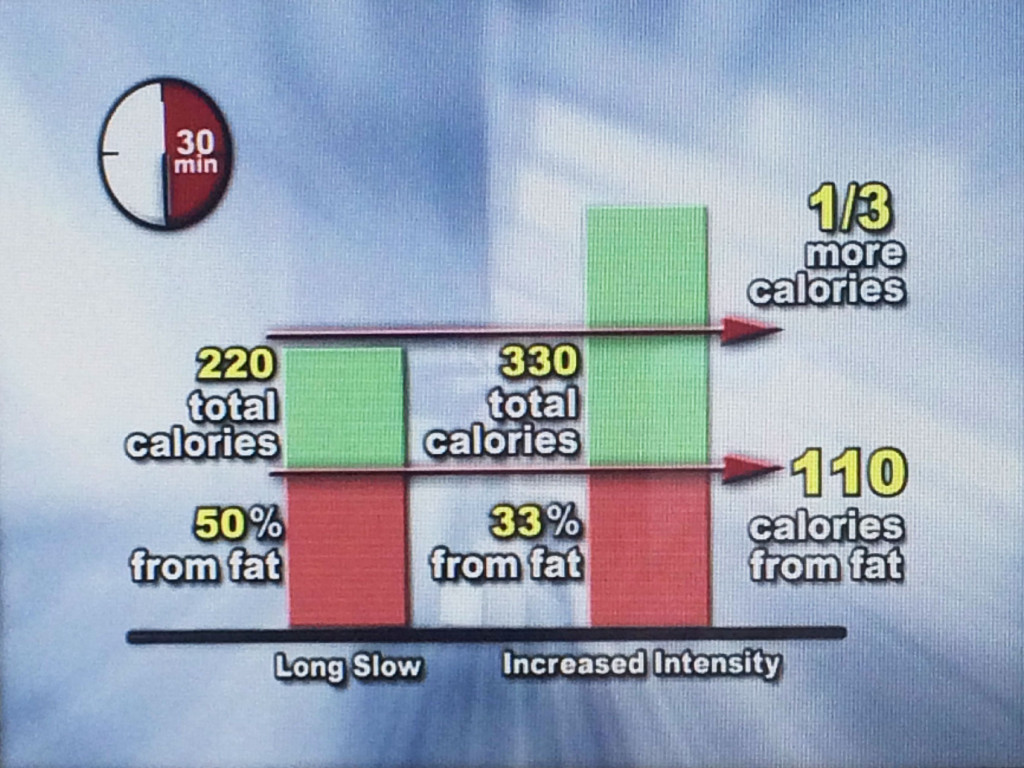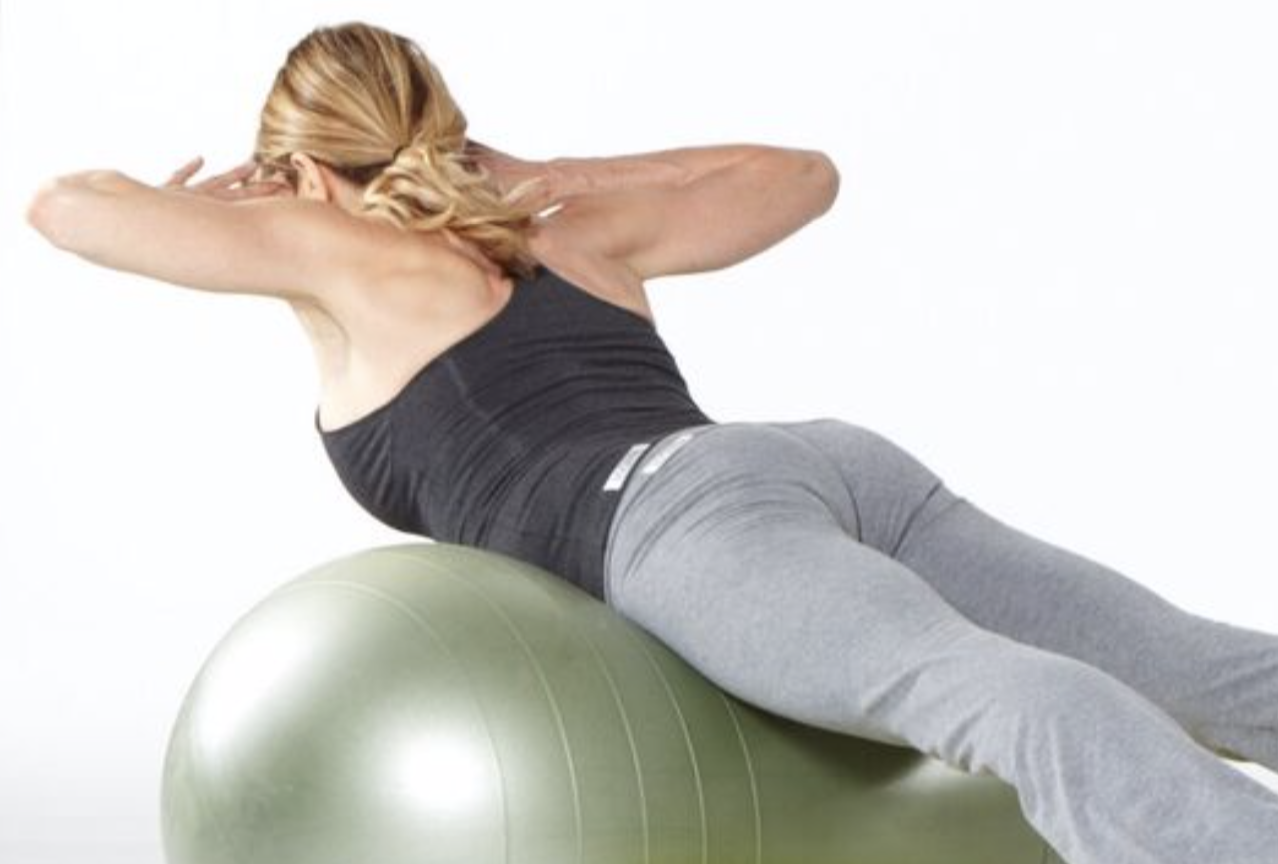The Rules Of Fat Burning
Today, I’ll show you how the real secret lies — not at any one approach, but in combining these method into a three-dimensional approach to fat burning.
The rules of fat burning are really the rules of how your body responds to these different types of training. When these three approaches combine, it creates synergy…a whole that’s greater than the sum of it’s parts. That means burning more fat in less time!
1. Long and Slow
Many people spend most of their time working out at a slow, easy pace. This type of training, called “Long Slow Distance” is often recommended for weight loss, because studies show it burns a higher percentage of fat than higher training. Trouble is, it’s not the most efficient calorie burner, and it’s calories that count! A typical long-slow workout might burn 220 calories in 30 minutes. In this so-called “Fat Burning Zone,” about 50% of those calories are being supplied by fat. Now, raise the intensity a bit until you’re burning 330 calories in the same time, and the percentage of calories from fat drops a little (to about 33%), but guess what? It turns out that 50% of 220 and 33% of 330 are the same! In both cases, 110 calories worth of fat are consumed. So, the higher intensity workout burns just as much fat, plus one-third more calories overall, and it’s the total number of calories that matters most!
Our goal is to train in a way that allows us to work at a higher level, so we can burn more calories and more fat in less time. Long-slow workouts (where you’re working for 30 minutes or more at a relatively easy pace) forms a great foundation. First, long-slow is perfect if you’re just starting out. When you’re out of shape, any activity at all makes a huge improvement. Second, it allows for recovery between more intense workouts. It’s not good to push your hardest all the time…that can lead to over-training, weakening your immune system, and your results could actually go down. Using long-slow for recovery is what gives you the energy to push on your harder days. Finally, long-slow soups up your muscles endurance by building more mitochondria (the energy-producing factories in your muscles). In my fat-burning system, you’ll be doing three long-slow workouts each week.
2. High Intensity Interval Training
Scientists rate workout intensity as a percentage of maximum heart rate (MHR). If you want to, you can track your heart rate by wearing a heart rate monitor, or checking your pulse. I found that a more simple way is to pay attention to your body. When you’re at 60-75% of your maximum, you feel like the happy face in the beginning of the video below. Most of this long-slow training is in this range. Here, you feel great, you’re relaxed, and you could keep going for a long time. Notice that at 75-85%, the smile flattens out into a look of determination. You’re not talking…you’re focused! You are on a mission! At 85-95%, you start making your battle-cry face! You can only keep this pace up for a few minutes.
3. Strength Training To Build New Muscle
Strength training does a lot of great things for your body…including increasing bone density, improving your posture, adding contour, and once again, devouring calories. Each new pound of that shapely muscle automatically hikes up your metabolism.






